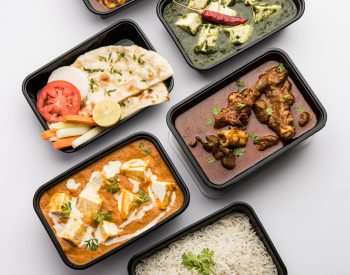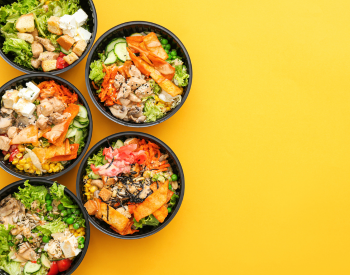Every day waste continues to fill landfills and oceans. One significant contributor is single-use food packaging used in restaurants and grocery stores. To address this issue, many organizations are turning to reusable food container programs, which aim to reduce the use of single-use packaging and promote sustainable alternatives.
Reusable food container programs are initiatives designed to replace single-use packaging with reusable containers that can be returned, cleaned, and used again. These programs operate in various ways, but they all share the goal of reducing the amount of waste generated by food packaging. The programs may be implemented in restaurants, grocery stores, or other food-related businesses, and they typically involve the use of containers made of durable, reusable materials such as glass or plastic.

What Is The Process Of A Food Container Program?
The basic concept of a reusable food container program is straightforward: customers are provided with a reusable container to transport their food, and they return the container to the establishment when they are finished. The containers are then cleaned and sanitized before being used again. This cycle of use and reuse helps reduce the amount of single-use packaging used and discarded, thus reducing waste and environmental impact.
One example of a reusable food container program is the “zero waste” movement, which promotes using reusable containers in all aspects of daily life, including food packaging. This movement encourages individuals to bring their reusable containers to restaurants and grocery stores, eliminating the need for single-use packaging. Many restaurants and grocery stores have also implemented their own reusable container programs, providing customers with the option to use a reusable container in place of a single-use one.
Advantages & Disadvantages Of Reusable Food Container Programs
Reusable food container programs have several advantages over traditional single-use packaging:
- They reduce the amount of waste generated, which helps to conserve natural resources and protect the environment.
- They promote sustainability by encouraging the use of reusable materials instead of disposable ones.
- Third, they can save businesses money in the long run by reducing the cost of purchasing and disposing of single-use packaging.
However, reusable food container programs also face some challenges. For example, the initial cost of purchasing reusable containers can be higher than the cost of single-use packaging. Additionally, managing the cleaning and sanitization of the containers can be a logistical challenge for businesses, particularly those with high customer volumes. Some customers may hesitate to use reusable to go containers for restaurants due to concerns about cleanliness or hygiene.
Despite these challenges, reusable food container programs have gained popularity in recent years, as businesses and individuals have become more aware of the environmental impact of single-use packaging. By providing a sustainable alternative to disposable packaging, these programs can help to reduce waste.
How To Start A Reusable Food Container Program At Your Restaurant
Starting a reusable food container program at your restaurant can greatly reduce waste and promote sustainability. Here are some steps you can take to start your own reusable food container program:
- Research and choose the right container: The first step in starting a reusable food container program is choosing the right one. Look for a durable, reusable container that can withstand repeated use and is easy to clean and sanitize. Consider options such as glass or reusable plastic, which are eco-friendly and can be reused many times.
- Determine the logistics of the program: Once you have chosen the right container, determine the logistics of your program. Decide on the size of the container, how many containers you will need, and how customers will return the containers to you. You will also need to establish a system for cleaning and sanitizing the containers between uses.
- Develop a marketing strategy: It is important to develop a marketing strategy to promote your reusable food container program. This can include signage in your restaurant, social media posts, and outreach to local environmental groups.
- Train your staff: Train your staff on how to handle the reusable containers and explain the importance of the program to them. This will help ensure that the program runs smoothly and that customers are properly informed.
- Launch the program: Once you have completed the above steps, launch your program. Make sure to communicate the details of the program to your customers, including how to use and return the containers. Consider offering incentives for customers who participate in the program, such as a discount on their meal or a free item with their reusable container.
- Monitor and adjust the program: It is significant to monitor the program and make adjustments as needed. Keep track of how many containers are being used and returned, and make changes to the program if necessary to improve its effectiveness.
Starting a reusable food container program at your restaurant can reduce waste and promote sustainability. By following these steps, you can create a successful program that benefits both the environment and your business.
Reduce & Reuse
Reusable food container programs are initiatives designed to reduce waste and promote sustainability by replacing single-use packaging with reusable containers. These programs can be implemented in restaurants, grocery stores, and other food-related businesses, and they can help to reduce the environmental impact of food packaging. While these programs face some challenges, they have gained popularity as businesses and individuals become more aware of the need to reduce waste and promote sustainability.









